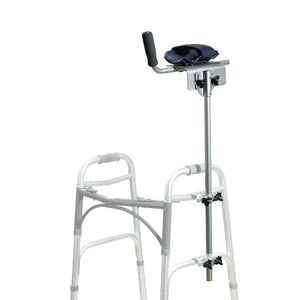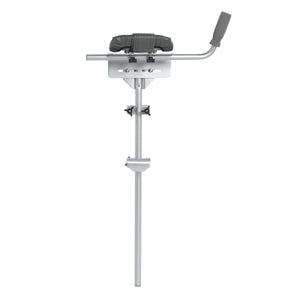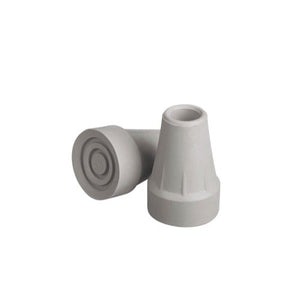Crutches are helpful during recovery but can lead to pain and discomfort when not used correctly. This guide explores the most common side effects of using crutches, their causes, and actionable tips for safe use and fast relief.
When recovering from injuries like fractures, sprains, or surgeries, crutches are essential for non-weight-bearing mobility. But improper use can lead to complications affecting your arms, shoulders, wrists, and even posture.
Understanding the short- and long-term effects of crutch use helps ensure better comfort, safety, and healing.
1. Arm Pain from Using Crutches
One of the first discomforts users report is arm pain, especially in the elbows and upper forearms. This occurs from prolonged pressure during walking, especially if the handgrips lack ergonomic support. Users may experience muscle soreness, tendinitis, or sharp aches due to overexertion.
Solution:
Choose ergonomic crutches designed with padded handgrips and shock-absorbing materials. They reduce strain on muscles and joints.
Shop now: Buy ergonomic crutches online
2. Underarm Nerve Compression
Leaning too heavily into the crutches with your underarms can compress the radial nerve, leading to numbness, tingling, or even motor control issues in your hands. This is known as crutch palsy.
Tip:
Never rest your weight on your underarms. Your hands and wrists should bear the weight, with elbows slightly bent and relaxed.
3. Blisters and Skin Irritation
Long-term crutch use, especially without padded handles or underarm supports, causes blisters, rashes, and friction burns. Hot weather or sweat makes it worse.
Solution:
Use breathable crutch pads and moisture-wicking gloves. They reduce rubbing and prevent bacterial infections.
Explore: Best crutch pads for arm pain
4. Wrist and Hand Strain
As weight shifts to the upper limbs, wrists absorb the pressure. Over time, this may cause wrist pain, carpal tunnel syndrome, or inflammation of tendons in the hands.
Recommendation:
Use crutches with contoured grips and keep your wrists in a neutral position. Avoid prolonged walking without breaks.
5. Back and Shoulder Tension
Incorrect posture while using crutches can lead to shoulder fatigue, neck stiffness, and lower back pain. Most users unconsciously hunch over or lean sideways.
Posture Tip:
Maintain an upright spine. Adjust crutches so handles are at wrist height when standing straight. Regular stretching and physical therapy can prevent stiffness.
6. Risk of Falling or Tripping
Falls often occur when users are unfamiliar with proper crutch technique or walk on slippery, uneven surfaces. Loss of balance, especially during stair navigation, can cause further injury.
Solution:
Practice on flat surfaces first. Add anti-slip rubber tips and avoid loose rugs or wet floors.
Safety tip: Always move the crutches first, then swing your injured leg forward.
7. Fatigue and Energy Loss
Using crutches burns significantly more energy than walking normally. Especially for elderly users or those with upper body weakness, crutch walking can be physically draining.
Fix:
Take regular breaks, avoid long distances, and use a lightweight pair of aluminum or carbon-fiber crutches. Even walker alternatives may be considered for certain cases.
8. Long-Term Effects of Crutch Use
If you rely on crutches for weeks or months without proper technique, it may lead to joint misalignment, muscle imbalances, and postural shifts. Over time, this can affect gait and increase the chance of re-injury.
Medical Advice:
Consult a physiotherapist for guidance. Combine crutch use with targeted strengthening exercises and avoid prolonged usage unless medically necessary.
Moovkart Crutch User Relief Tips
- Use ergonomic grips and gel-padded armrests
- Adjust your crutch height properly before first use
- Walk slowly with controlled, symmetrical movements
- Maintain hand-positioned weight bearing, not underarm leaning
- Add anti-slip crutch tips for uneven terrain
- Wear wrist braces if experiencing early signs of strain
- Take breaks every 20–30 minutes when walking long distances
Recommended Products from Moovkart
- Ergonomic crutches for pain-free support
-
Crutch pads that reduce friction and prevent blisters
- Anti-slip tips for increased safety
Hand support wraps and wrist bracesShop Mobility Accessories Now
Frequently Asked Questions (FAQs)
1. What are the side effects of using crutches for too long?
Prolonged crutch use without proper guidance can result in muscle weakness, nerve issues, and spinal misalignment.
2. Why do my arms hurt when I use crutches?
It’s usually due to poor handgrip design, lack of padding, or using your underarms for support instead of your hands.
Q: How do I make using crutches more comfortable?A: Use padded handles, wear wrist support, adjust height correctly, and avoid leaning on your armpits.








